

|
All Photographs © Sam Oppenheim
|
|||||||||||||
| ||||||||||||||
| |||||||||||||||||
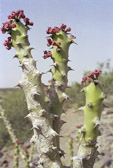 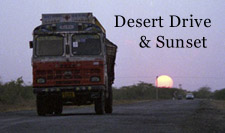 As per my prior arrangements, I met professor Bisht on a flight to Bhuj, the closest Indian airport to Pakistan, near the Arabian gulf in the desert of Gujarat. This area is home to a geological phenomenon unique in the world called the "Great Rann of Kutch" and its offshoot, the "Lesser Rann". (now spelled kachchh but I prefer old phonetic kutch) This is a salt-flat-desert which periodically floods and then dries up into glistening white salt flats for 100s of miles. (it forms the border with Pakistan).
As per my prior arrangements, I met professor Bisht on a flight to Bhuj, the closest Indian airport to Pakistan, near the Arabian gulf in the desert of Gujarat. This area is home to a geological phenomenon unique in the world called the "Great Rann of Kutch" and its offshoot, the "Lesser Rann". (now spelled kachchh but I prefer old phonetic kutch) This is a salt-flat-desert which periodically floods and then dries up into glistening white salt flats for 100s of miles. (it forms the border with Pakistan).
Professor Bisht is the director of Archaeology of the Archaeological Survey of India [Now Semi-Retired 2004] - He is in charge of many sites, but most prominently DHOLAVIRA the largest excavated Indus Valley Civilization site in India. Before the flight we hardly knew each other, but by the time we arrived in Bhuj and drove 4 hours, 200 kilometers across the desert to an Island in the Rann of Kutch, we had become quite close. In fact, Amazingly, by the time I left Dholavira just two days later, he had practically adopted me as a son and I him as a teacher of vast knowledge on the Indus Valley civilization. 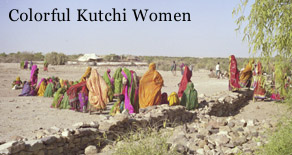 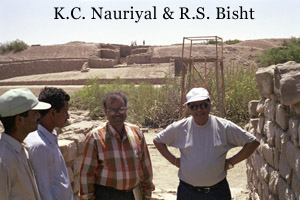 Bisht spent nearly every waking minute answering my earnest, annoying questions. I know my mind is always thinking and questing for answers, so I certainly asked too many. But, as I hope to make a career out of studying this, I have an insatiable need to know more about this site and civilization! Walking on the site and having it personally explained to me by the 'god' of its excavation was like nothing anyone should ever get the opportunity of - what did I do to deserve this gift? I was so pleasantly treated with India's famous hospitality toward guests. I was served food, given a mud-brick room while all others slept in tents, given bottled water (just in case) while others drank filtered well-water. And the whole time he (Bisht) refused to let me pay for a single thing. One morning I walked to the site at sunrise, before the daily workers, and was permitted to photograph as long as I promised not to publish them. Many of these photos show the beautiful native Kutchi women, the local economy is now largely seasonal labor for excavation. 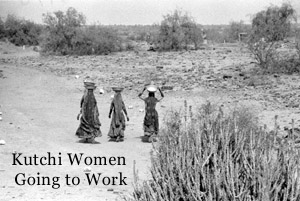 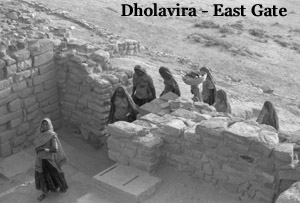 Needless to say the site was phenomenal! A man-made castle of mud-brick, the remains of which are walls twenty meters thick at the base tapering up to a full height of over 22 meters. (that's over 60 feet, originally it was higher but time has waylaid it). These bastions and walls are coated with a thick stone armor (over the mud-brick) to make them more imposing, and were built over 4,000 years ago! Imagine!!! 2,000 B.C.E!!! The city built a dam on a river, and dug huge pools to collect water in the desert to store water year round. These pools are 20 meters deep and 40 meters on all sides! These are the earliest worldwide rock-cut water reservoirs, they CUT into the sandstone bedrock with tools, by hand! They also built sewage systems in their towns, and most homes had private bathrooms!
ANYWAY, I won't bore you with details of what I will study my whole life and make a career of giving lectures, I can grasp it more fully later and bore you with a full fledged lecture someday! This site, this experience, the knowledge imparted by professor Bisht, his friendship, and that of his assistant, the site excavator K.C. Nauriyal - was an unforgettable special experience! To leave I was going to get a car and have to pay 10 cents per kilometer for driving 400 kilometers, and pay him for his return trip, which would have been $80 or more, and a FORTUNE in Indian currency - BUT - K.C. Nauriyal (KC) offered to take me with him on his trip to Ahmedabad because he was going to Delhi to file government tax reports for this archaeological season. (in India, of course, this must be done in person, no fax, no mail, crazy stupid red tape but it worked in my favor this one time). 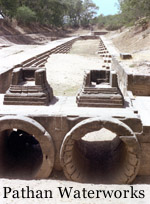 Travelling with KC was a wonderful adventure! Instead of going directly to Ahmedabad he took two LONG detours for my edification, we visited Surkotada, an Indus site, a fort much smaller than Dholavira in the desert of Gujarat 100 kilometers as the crow flies from Dholavira, but much further by road. Next we drove to Pathan, a site that was the capital of the last great Hindu dynasty in India before the first Muslim invasion in the 12th century. They built a system of waterways and reservoirs like Dholavira, a huge complex which diverted a river to save water for municipal use, and I saw a sunken well which was decorated on all walls with gods and goddesses! This site was so amazingly detailed and beautiful I cannot imagine who created it, how much work it took, and how amazing it must have been when newly built over 1,000 years ago! 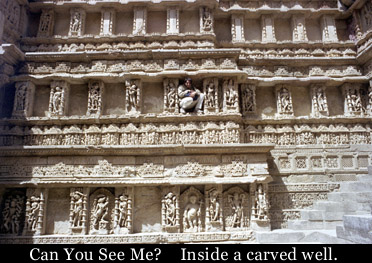 Then KC took me to his sister's apartment in Ahmedabad and I had a home cooked delicious Indian meal. Again, I felt so privileged to spend time with K.C. Nauriyal and R.S. Bisht, legends in Indian Archaeology. I sat squashed next to them in cars and planes... Talking about the mundane and the theoretical, whether ancient civilizations committed iconoclasms or remodeled their castle fortifications. They even asked me for advice and thanked me sincerely for my input and fresh questions, saying that a new opinion is always valuable. I cannot express enough how phenomenal the experiences over the past three days have been, I got to go down, into depths of excavation pits, over "no visitors allowed' signs, into archaeologists offices, bathrooms, kitchens. I was a guest of honor in a way far beyond what I deserved, I slept in the same bed world-famous archaeologists have used while visiting Dholavira. I handled newly discovered artifacts, a gold earring 1 cm in diameter, and a museum-quality seals discovered this year! I walked over and ran my hand along freshly excavated marble pillars in a 4,000 year old castle! I picked up an unidentified terracotta and helped identify it - they had it upside down and now they agree my interpretation is valid! I think I have said enough. This experience was the cream of an archaeological crop, a dream visit come true, beyond tourism, beyond learning, beyond experiencing, I was somehow a part of the site, part of the archaeology experience like I was in Israel, an Insider. Now for the other big news: My American academic guru will be Professor Mark Kenoyer at the University of Wisconsin, I have accepted their acceptance and will be attending in the fall. Ironically I decided this before meeting professor Bisht, and he solidified my decision even more. |